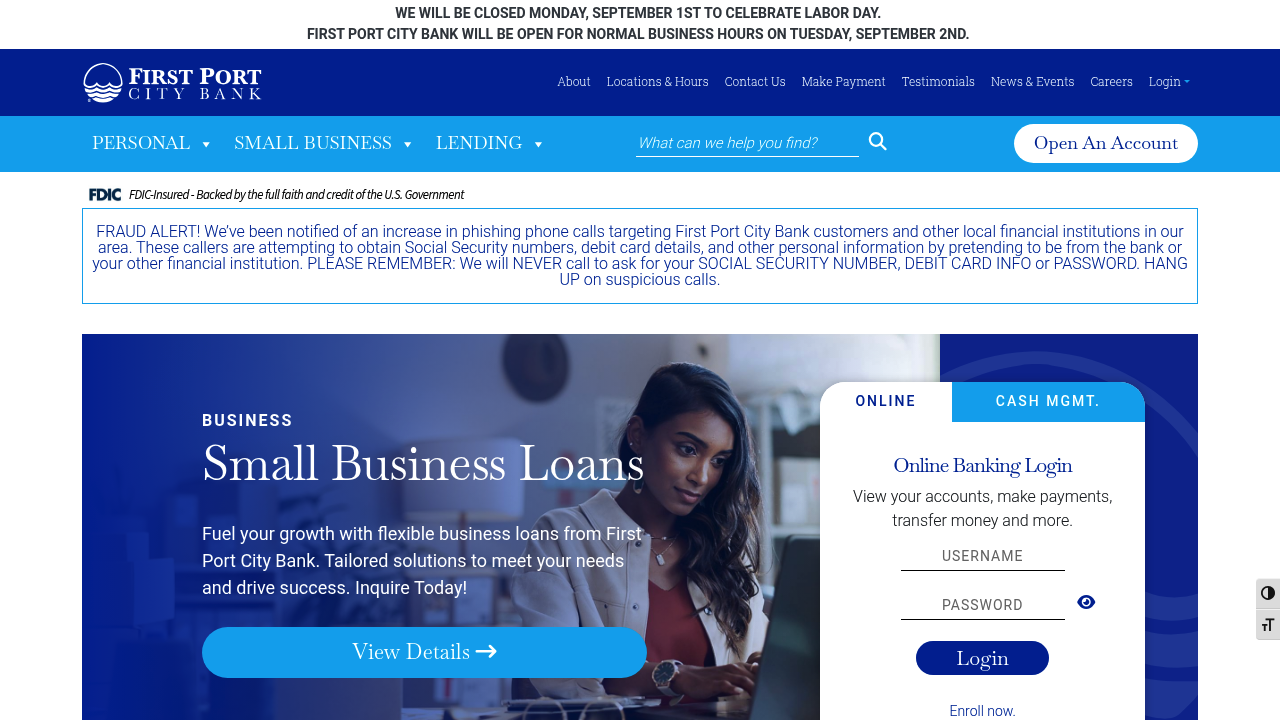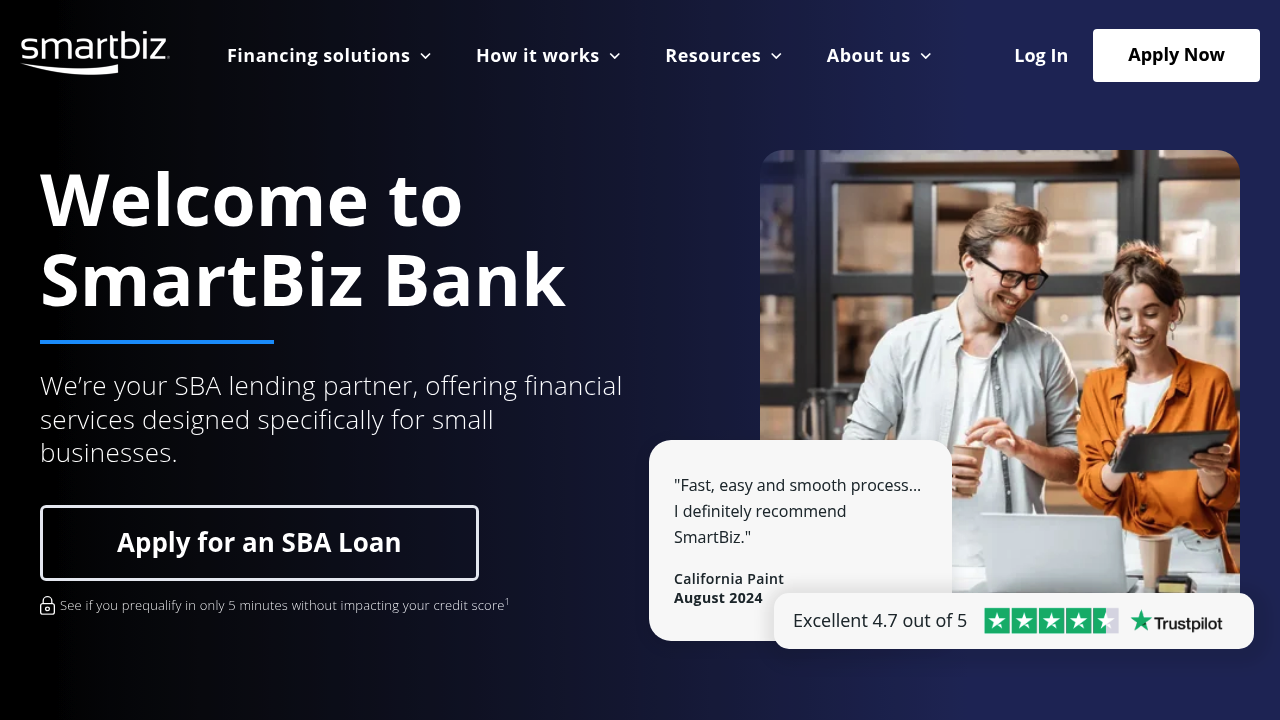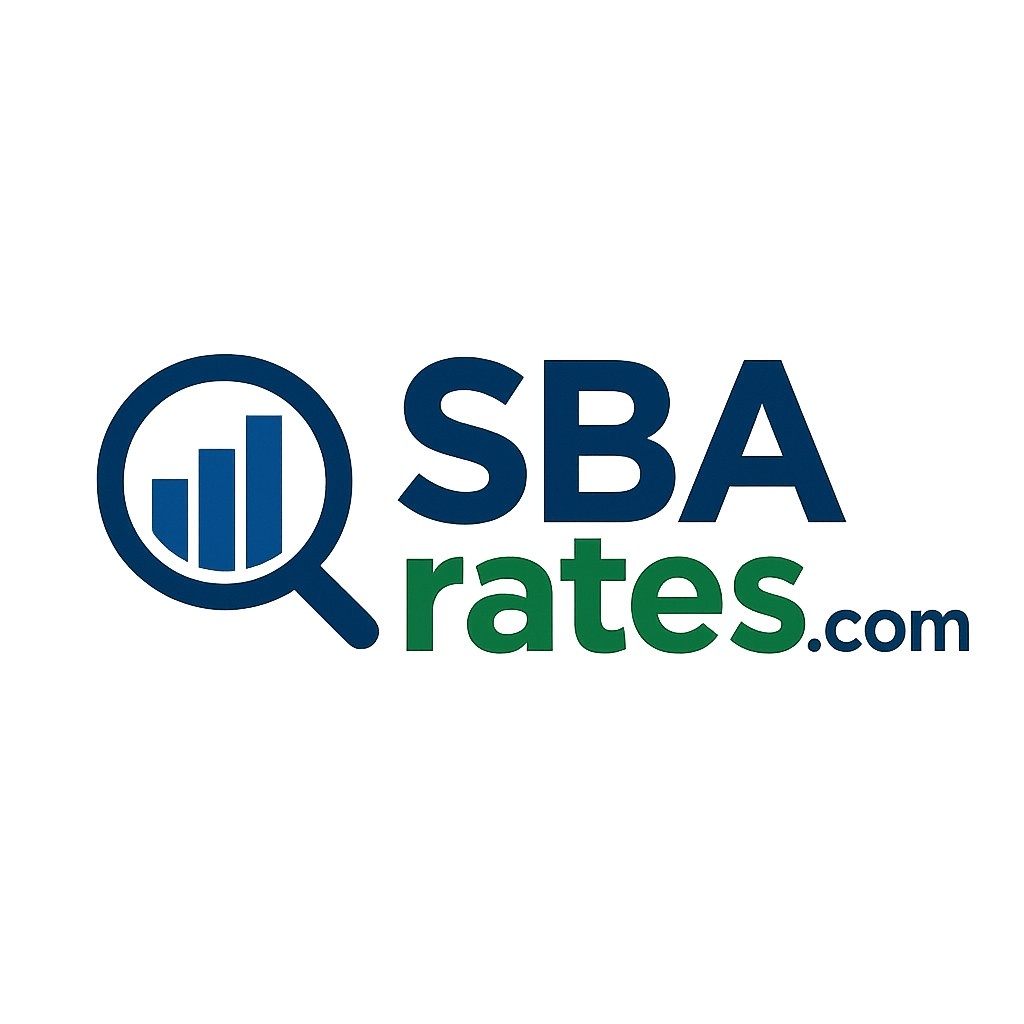Postharvest Crop Activities (except Cotton Ginning)
115114

 First Port City Bank (FL)
First Port City Bank (FL)
First Port City Bank is your trusted bank for personal and business checking, savings, mortgages, loans and more with branch locations in Florida and Georgia.

CenTrust Bank, A Division of SmartBiz Bank National Association (IL)
SBA Loans for Postharvest Crop Activities (except Cotton Ginning): Financing Growth in Agricultural Support Services
Introduction
Postharvest Crop Activities (except Cotton Ginning) (NAICS 115114) are essential to modern agriculture, providing the cleaning, sorting, drying, storage, and preparation of crops after harvest. These businesses ensure that grains, fruits, vegetables, and other crops meet market standards before reaching processors, distributors, or consumers. Without these services, agricultural supply chains would face major inefficiencies and food quality risks.
Running a postharvest crop activity business, however, comes with steep financial challenges—high equipment costs, facility maintenance, utility expenses, and strict food safety regulations. Traditional lenders often hesitate to fund these businesses due to seasonal revenue and market volatility. That’s where SBA Loans for Postharvest Crop Activities provide a solution. With longer repayment terms, lower down payments, and government-backed guarantees, SBA loans make it easier for agricultural businesses to access the capital they need to operate and grow.
Industry Overview: NAICS 115114
Postharvest Crop Activities (except Cotton Ginning) includes businesses that handle crops after harvest but before sale. Typical services include crop cleaning, shelling, fumigating, curing, sorting, drying, waxing, and packaging. These operations help farmers preserve crop quality, extend shelf life, and prepare goods for shipping to processors and retailers.
The industry plays a critical role in reducing food waste and meeting consumer demand for safe, consistent, and high-quality produce. However, these services are capital-intensive, requiring advanced equipment and strict compliance with food safety standards such as FDA, USDA, and state-level regulations.
Common Pain Points in Postharvest Crop Activity Financing
Based on farming forums, Quora discussions, and small agribusiness communities, here are the major financing challenges in this sector:
- High Equipment Costs – Dryers, sorters, shellers, fumigation systems, and storage units require heavy upfront investments.
- Energy & Utility Expenses – Postharvest processes like drying and refrigeration demand high electricity and fuel usage.
- Seasonal Revenue – Businesses depend heavily on harvest cycles, creating gaps in cash flow during off-seasons.
- Regulatory Compliance – Meeting safety, quality, and traceability standards requires continuous investment in systems and certifications.
- Bank Rejections – Many lenders view agriculture-related businesses as risky due to market volatility and weather dependence.
How SBA Loans Help Postharvest Crop Activity Businesses
SBA loans provide affordable financing that allows operators to purchase equipment, stabilize cash flow, and expand services. Here’s how different SBA programs support the industry:
SBA 7(a) Loan
- Best for: Working capital, refinancing, equipment purchases, or expansion.
- Loan size: Up to $5 million.
- Why it helps: Provides flexible funds for payroll, utility costs, or upgrading processing equipment.
SBA 504 Loan
- Best for: Facilities and large-scale equipment purchases.
- Loan size: Up to $5.5 million.
- Why it helps: Perfect for building or upgrading crop storage facilities, drying systems, or large-scale packing lines.
SBA Microloans
- Best for: Small agribusiness startups or niche processors.
- Loan size: Up to $50,000.
- Why it helps: Useful for buying small equipment, licensing fees, or marketing services to farmers and distributors.
SBA Disaster Loans
- Best for: Recovery after natural disasters disrupt operations.
- Loan size: Up to $2 million.
- Why it helps: Provides funds to repair facilities, replace damaged equipment, or restore lost income after floods, droughts, or storms.
Step-by-Step Guide to Getting an SBA Loan
- Check Eligibility – Must be a U.S.-based, for-profit business with credit scores typically above 650 and the ability to demonstrate repayment.
- Prepare Documentation – Include tax returns, crop contracts, equipment quotes, and compliance records.
- Find an SBA-Approved Lender – Seek lenders with experience financing agricultural or processing businesses.
- Submit the Application – Clearly outline how the loan will support operations, compliance, or facility upgrades.
- Approval Process – SBA guarantees up to 85% of the loan, lowering lender risk. Approval generally takes 30–90 days.
FAQ: SBA Loans for Postharvest Crop Activities
Why do postharvest businesses struggle to get financing?
Because revenue is seasonal and dependent on farming cycles, banks often see these businesses as risky. SBA guarantees reduce that risk and make approvals more likely.
Can SBA loans finance dryers, sorters, and refrigeration equipment?
Yes. SBA 7(a) and 504 loans are well-suited for purchasing or upgrading postharvest processing equipment.
Are small or independent postharvest businesses eligible?
Yes. SBA loans are designed to support both startups and established businesses in agricultural services.
What down payment is required?
SBA loans typically require 10–20% down, compared to 25–30% for conventional bank loans.
What are typical SBA loan terms?
- Working capital: Up to 7 years
- Equipment: Up to 10 years
- Real estate/facilities: Up to 25 years
Can SBA loans fund compliance and food safety upgrades?
Absolutely. SBA loans can finance traceability systems, certifications, and food safety improvements required by regulators and buyers.
Final Thoughts
Postharvest crop service providers are essential to ensuring food quality and reducing waste, but they face high costs and seasonal revenue cycles that strain finances. SBA Loans for Postharvest Crop Activities (except Cotton Ginning) provide affordable, flexible funding to stabilize cash flow, purchase equipment, and expand operations.
Whether you’re upgrading storage facilities, investing in new processing equipment, or preparing for regulatory compliance, SBA financing can help your business thrive. Connect with an SBA-approved lender today to explore your options.
Filters
Tags
#Preferred Lenders Program
#SBA Express Program
#Existing or more than 2 years old
#Startup
#Loan Funds will Open Business
#Change of Ownership
#New Business or 2 years or less
#7a General
#Variable Rates
#Fixed Rates
#Asset Base Working Capital Line (CAPLine)
#International Trade Loans
#Export Express
#7a with WCP
#Contract Loan Line of Credit (CAPLine)
#7a with EWCP
#Preferred Lenders with WCP
#Preferred Lenders with EWCP
#Seasonal Line of Credit (CAPLine)
